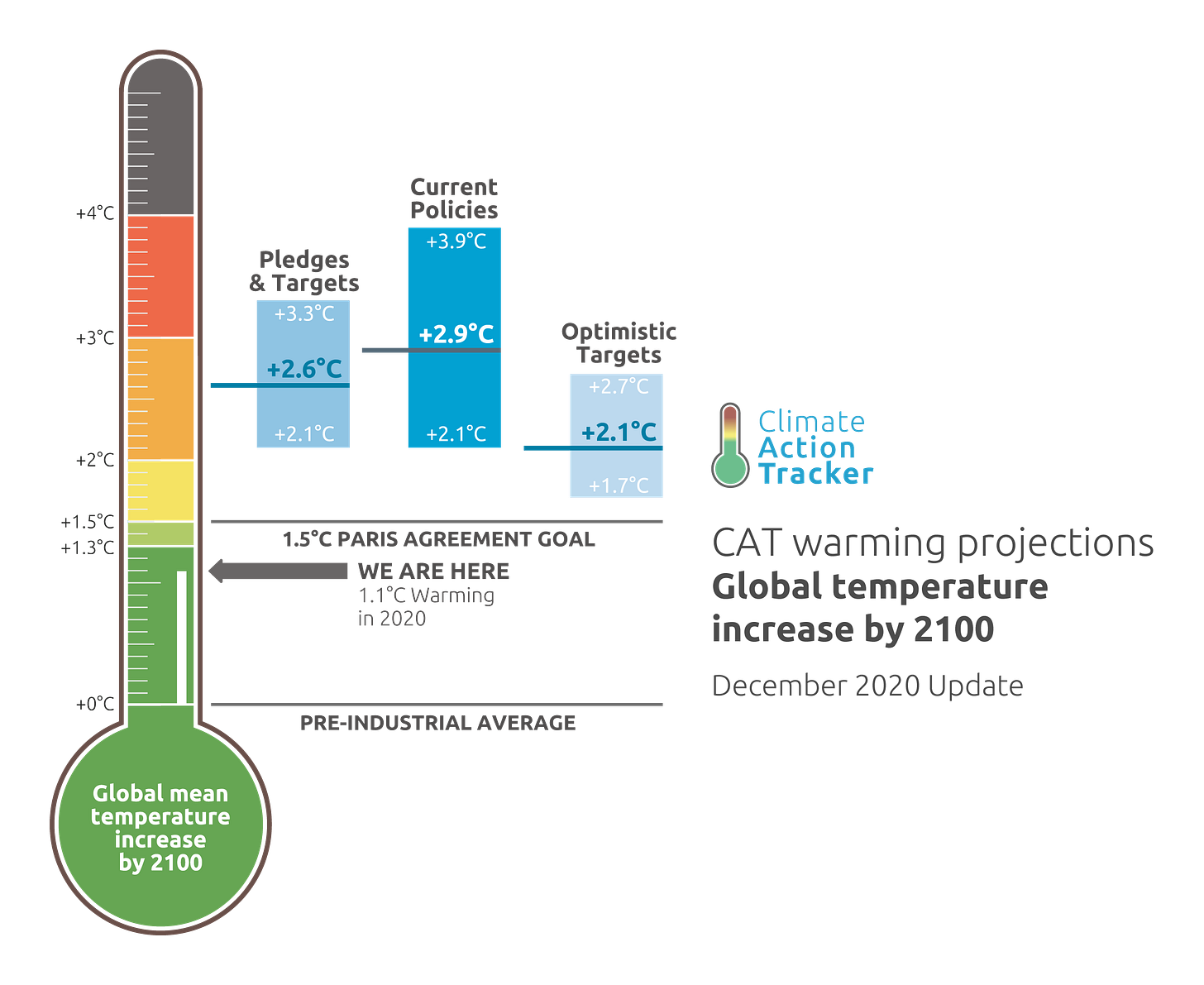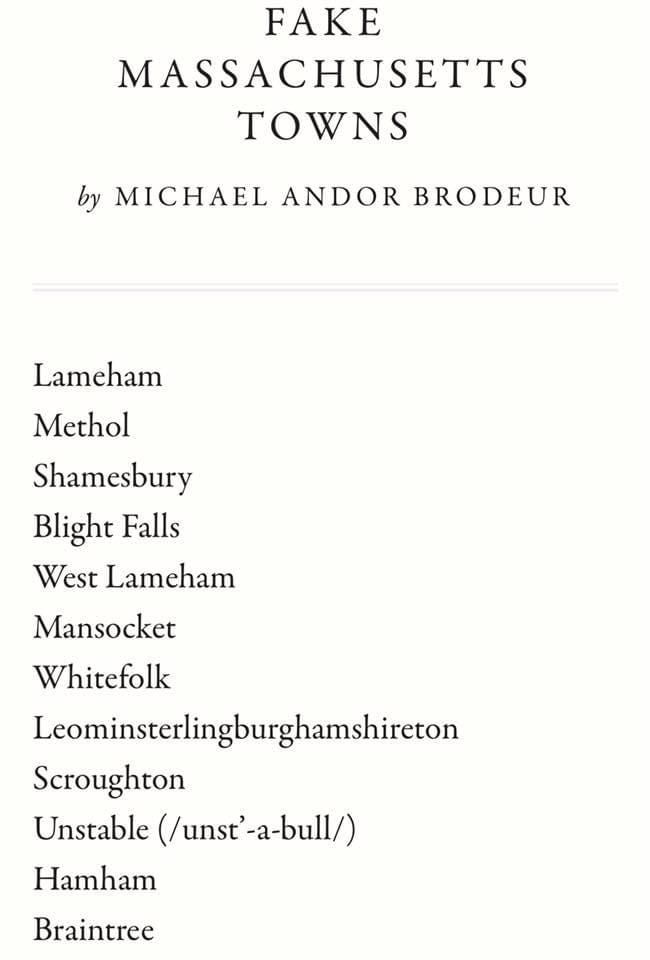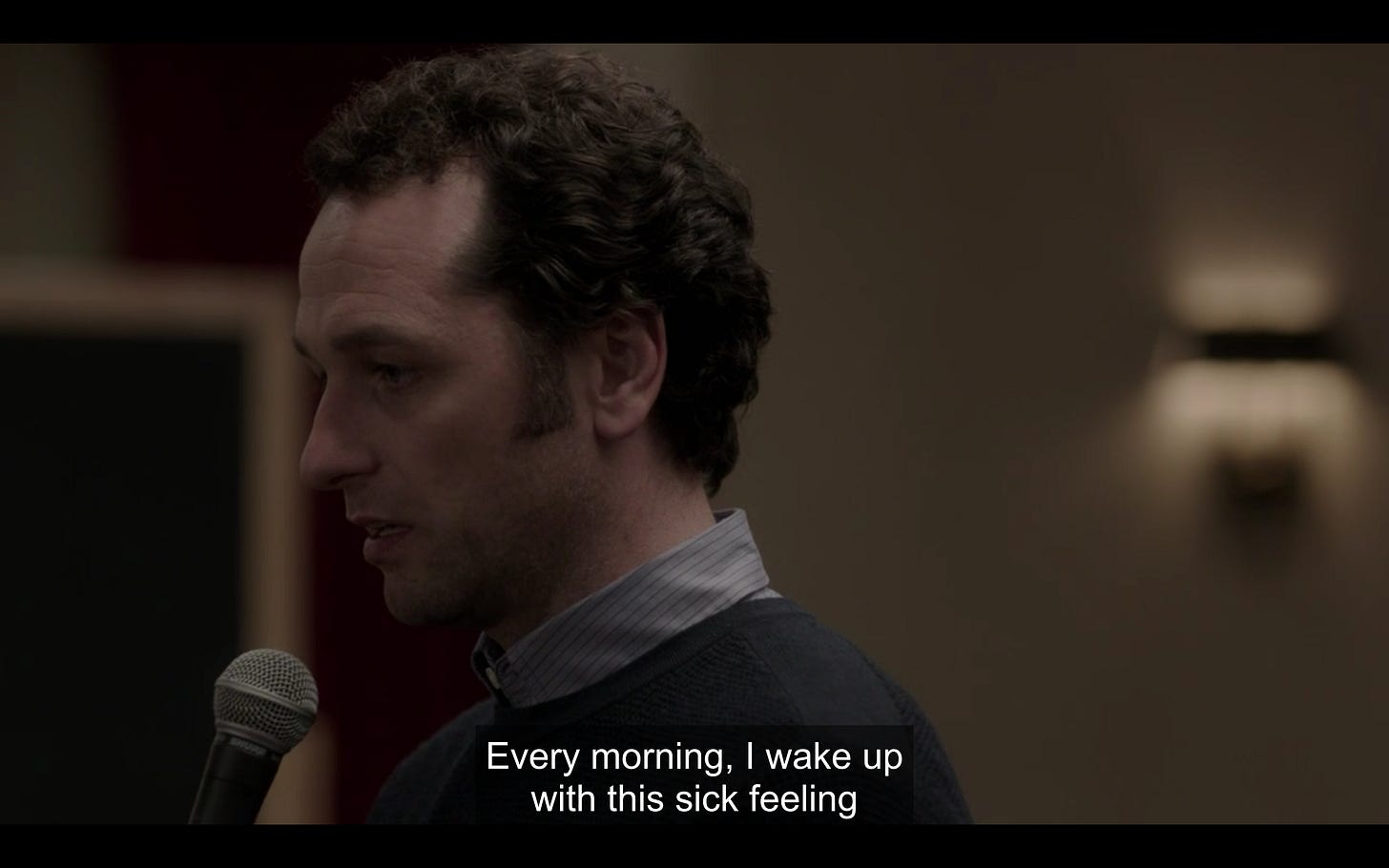77: Can we have nice things?
The trains are clean and spacious and run on time, but the destination is not always clear
Back when the pandemic was first really getting fired up, I did a little communications work on the need to ensure that public transit doesn’t waste away as people flee to their cars, because specifically in Boston, that would actually be the end of the city we would all just have to live inside of our cars for the rest of our lives moving one inch in traffic per year. But it would also be the end of our chances to keep the planet under 2 degrees of warming, as some 30% of this country’s GHG emissions come from transportation.
I was thinking of what it would actually look like for some much larger, necessary percentage of the population to have confidence in public transit such that they would rely on it even in a time of heightened public health threat, or for that matter, extreme weather as a result of climate change.
I think we can acknowledge that it would have to look very different than what we have now. It would require frequent high speed rail and rapid bus service you could set your watch to, constantly cleaned facilities, filtered or fresh air, enough capacity to be efficient but with much more personal space for each rider. From a broader transportation standpoint, you’d need to add a web of protected bike lanes and shaded pedestrian greenways.
What luxury compared to infrastructure in most of the country, right? And there’s need for improvement far beyond city commutes. Imagine visiting friends and family one city over via a cheap, fast train ride instead of a carbon-spewing flight. Reliable, community-owned energy in rural towns that residents can sell back to the grid. Affordable electric cars and trucks with enough charging stations you never have to think about it, regardless of where you live. Roll the tape on some future documentary where the voiceover is like, it wasn’t always like this things used be real shitty around here, but in the year 20XX, Americans made a change…
That is a nice little fantasy, but if I’m being honest, sometimes when I think about this kind of thing, I will ultimately conclude, you know what, this country would just never, ever do that stuff. Too much of our identity is caught up in personal possession over common good, it would just never happen. And this is, as they say, why we cannot have nice things.
That has been kind of a running thread around here for the past couple of months. We talked about bell hooks’ observation that patriarchy serves everyone poorly, that “well-being…is not the same as feeling rewarded, successful, or powerful because of one’s capacity to assert control over others,” though the latter is seductive and celebrated. We talked at length during the pandemic about how people are so terrified of losing certain freedoms in the form of infringement, that they sacrifice the positive freedom that comes with being able to live a life that is healthy, safe, and full of opportunity. So we end up perpetually in this state of crumbling public goods, these janky versions of basic necessities that countries with far less wealth don’t think twice about having.
But I am starting to get more dare I say optimistic that maybe it doesn’t have to be like that. Last week we talked about the misguided fixation on free ridership and collective action theory as the barrier to climate action, and how, in fact, actions that benefit the whole also offer clear benefits for individuals—if we can overcome the power imbalances that keep them from happening.
Now this week, look what rolls up but a shiny $2 trillion infrastructure proposal, in which climate action is central, that seems to be politically hinged on the argument that doing what is necessary to avert global catastrophe will also make our individual lives better along the way. It’s a policy package with its share of flaws, and climate people seem to agree it is far too small. It remains a giant open question as to whether it has a chance of making it through the Senate or if whatever does emerge will produce equitable outcomes. But it is without a doubt a big infrastructure thingy, and since we are feeling optimistic, we might view it as a crack in the door into that future country where we can in fact have nice things.
Biden’s bet
The Biden administration’s new infrastructure plan is big—five times what Obama spent on climate in the ARRA—but it is still not nearly big enough. That’s been the take home message from climate justice, housing, and transportation advocates alike. Keep in mind that those trying to sell the package to progressives are emphasizing that it’s just the beginning, but part of the issue is that eye-popping figure is spread out over eight years, which would end up equalling around 1% of annual GDP. Analysts from varying political ideologies have pegged the necessary spending toward decarbonization at more like 5% of GDP. The competing THRIVE Act, which you will not be surprised to learn that I prefer, floats $10 trillion in spending over 10 years. (Check out a line item comparison between the two here).
If you are thinking jfc is no amount of government taxing and spending enough for these people, the answer you will get from me when it comes to climate change is basically no. Any concerns about running the economy too hot or running up the deficit just make very little sense at this stage in the game. That’s because we are far behind and, as David Wallace-Wells points out in The Uninhabitable Earth, “Every degree of warming, it’s been estimated, costs a temperate country like the United States about one percentage point of GDP.” We’re currently on pace for something like 3 degrees of warming, and if we hit 3.7 degrees, which is on the higher end but still absolutely on the table, we can expect “$551 trillion in damages, according to at least one estimate—almost double the amount of wealth that exists in the world today.” So let’s not nickel and dime this thing OK.
But the plan is still a bfd, and it has a lot of stuff in it, which has kept advocates working overtime to sort it all out since it dropped Wednesday. There is also a lot of stuff to like (see Julian Brave NoiseCat’s collection of tweets, a thread, if you will, for his reactions). As T4America says, “We have never seen this much money for public transportation and passenger rail included in a presidential infrastructure proposal.” That includes billions to modernize transit, get Amtrak up to speed, and a line item to repair some of the violence done to communities of color and low income neighborhoods by racist city freeway projects. Transit people have their share of concerns, including that there’s an opening for highway expansion which would be virtual insanity. There’s a big investment in electric cars, which some people will not like, but that includes a national network of 500,000 chargers, which could have powerful network effects and expand where it makes sense to own an EV.
It includes plans for 2 million affordable homes which is good, but far less than competing housing bills. It does, however, call to eliminate exclusionary zoning laws that block development of multifamily and affordable housing.
In other words, it’s a big old spending bill, with a lot of promise and some great features, but also kind of centrist in some ways. It also seems to have a 2-to-1 margin of support, although sadly, the Senate is so skewed to the right, even a bill that popular could very likely get not a single Republican vote.
A wind in the door
There’s a ton to say about this package of policies and whether it could pass, but what I find hopeful about it is the fact that it is sending a particular message—that the U.S. government is going to do big things, and we’re going to pay for it with some of the obscene wealth that our economy has been hoarding at the top. The plan would reverse some Trump-era tax cuts on the wealthy and raise corporate taxes to pay for itself.
Just as activists during the election referred to a Biden administration as a doorway and not a destination, this proposal might be seen as opening that doorway a bit wider, raising the stakes of what government is willing to do to address several converging crises. A lot of people said that was the message of the latest COVID stimulus, which was similar in size, but that was an emergency response effort. This, in theory, is about making things better.
That’s a message that is not always prominent in pleas for climate action, because, frankly, there is without a doubt a lot of sacrifice and suffering on the horizon. But the Biden administration seems to understand the power in pointing out the ways in which climate action makes our lives better, focusing in particular on jobs, as he likes to do. There’s this engineer Saul Griffith who has been beating a similar drum for years now, citing the economic and labor benefits of decarbonizing by electrification. “I think our failure on fixing climate change is just a rhetorical failure of imagination,” he says. “We haven’t been able to convince ourselves that it’s going to be great. It’s going to be great.”
While I’m no techo-optimist, I really do believe there is truth in what he is saying, that we’re talking about more than just narrowly averting a doomed world. Shady trees make us happy. When we don’t burn fossil fuels we breathe better, our kids are healthier, we live longer. Just this week I was reading about how we could cover the world’s canals with solar panels, which takes up no additional land, makes the panels work better, and conserves water. Or how putting them over agriculture and grazing fields make for happier livestock, in many cases more productive crops, and more effective solar panels. It’s those little glimpses that make you think we really we will figure this thing out.
The Jackpot
The big P Problem that you knew was coming is whether we can make this transition soon enough that it won’t cause mass suffering, disproportionately distributed, and whether that transition leads to this better world for all. Or if it continues moving us toward increasing accumulation of wealth and comfort at the top and increasing tolerance of societal pain everywhere else. The techno-optimists and the eco-modernists are wrong, not because technology isn’t necessary to solving these problems, but because on its own, it just never gets the solutions into the hands of the people who need them the most.
I don’t know if old Scranton Diamond Uncle Joe’s plan is up to the task. Climate justice activists are both impressed by some features and skeptical of others. A statement from the It Takes Roots Alliance acknowledged the package as a good first step, but implored Biden to do more, and do it better. They called for a doubling of spending on affordable housing, greater support for caregivers, funding for community and tribal-owned energy infrastructure, and more direct funding to frontline and Indigenous communities. The THRIVE Act, for comparison, would create a board of representatives from impacted communities, tribes, and unions to direct funding decisions, and build in community benefit agreements and wage and benefit guarantees.
Biden is leaning heavily on the idea that union labor will benefit from clean energy jobs, which is possible but not a given. It’s tempting to brush aside fossil fuel workers’ resistance, but what’s going to ensure that wind and solar and electrification jobs will not amount to a significant pay cut?
Another way to think of this is, given the starkly unequal economy we have now, what happens when you shovel a bunch of government money into the machine? Can you do it in such a way that benefits the working class? Will it actually tip the balance of power or just turbocharge the status quo? I don’t know!
Last year I wrote about the novel The Peripheral by William Gibson, in which half of the narrative takes place something like 100 years in the future in London, and it’s a seemingly hopeful place, resurfaced with flowing rivers and covered almost entirely in greenery, punctuated with gleaming high-rise towers. There are also notably few people walking the streets and eventually ~spoilers~ we learn that this future is the product of a slow-moving, multifaceted global collapse called “The Jackpot,” which over 40 years wiped out some 80% of the population. Along the way, there was a leap in technology, but the people remaining are ruled by plutocrats and democracy has been eradicated, leaving behind a hard, vacant world stripped of any social contracts. Like I wrote at the time, “Humanity figured it out. But it was too late, and it cost us everything.”
So that is an awfully dark version of what is on the other side of that doorway to another world. So much for my optimistic post. Don’t worry, I’m like 99% certain that will be not the product of this infrastructure package. On balance, passing a huge spending bill funded by corporate taxes would be a hell of a good step in the right direction. But even in this fantasy about a better country in which we can have nice things, the trains are clean and spacious and they run on time, but the destination is not always clear.
Links
The infrastructure plan is the kind of government spending that is popular among voters in both parties, so Republicans have already begun spreading bullshit to convince people it is a bad idea.
Charlie Baker finally signed the damn climate bill.
Emily Atkin has been covering the water protectors in Minnesota fighting the Line 3 tar sands pipeline. “The ripples grow larger. We are protecting your water too.”
Eastern Kentucky continues to experience severe flooding.
“At least 55 of the largest corporations in America paid no federal corporate income taxes in their most recent fiscal year despite enjoying substantial pretax profits.”
I love this photo spread of the bike commuting boom in Manila, including the guy who makes bamboo bikes, which he calls “the people’s bike.”
More research on the disproportionate emissions from “super emitting” frequent flyers. In the United States, 12% of people took 66% of all flights. Almost 90% of the world’s population does not fly at all.
Super Link
Suffolk District Attorney Rachael Rollins has been intentionally not prosecuting crimes by non-violent offenders, an agenda she ran on. Cops and judges have fought her every step of the way, in some cases illegally. Rollins opened up the county’s data for an independent study on the approach, done by NYU, Rutgers, and Texas A&M.
Rollins granted the researchers’ request for unprecedented access to the data in February 2019, a month after taking office. She vowed it would be a real-time test of her public policy positions, and committed to using the research findings to shape her future policies, even if the findings turned out to be contrary to her efforts.
Researchers found that not prosecuting low-level crimes was more successful in directing nonviolent offenders away from the criminal justice system.
“Keeping these individuals out of the criminal justice system seems to have an effect; it seems to stop the path of criminal activity from escalating, and that’s the takeaway from this study.”
Watching
More of The Americans. Season 5 slows down a bit but still good. Anybody want to go in with me on a revival of EST? I think we could help a lot of people.
Listening
A Plane over Woods, The Vernon Spring
Reading
I love this quote she references from Bruce Sterling, “The future is about old people, in big cities, afraid of the sky.”
Not doing a ton of traveling by car or train or anything lately, but in my mind I’m on a bullet train to Lameham or West Lameham or Hamham where we are all going to meet up for maybe like a nice concert in the park. I can’t wait. Bring a sweater in case it gets chilly see you there.
Tate





